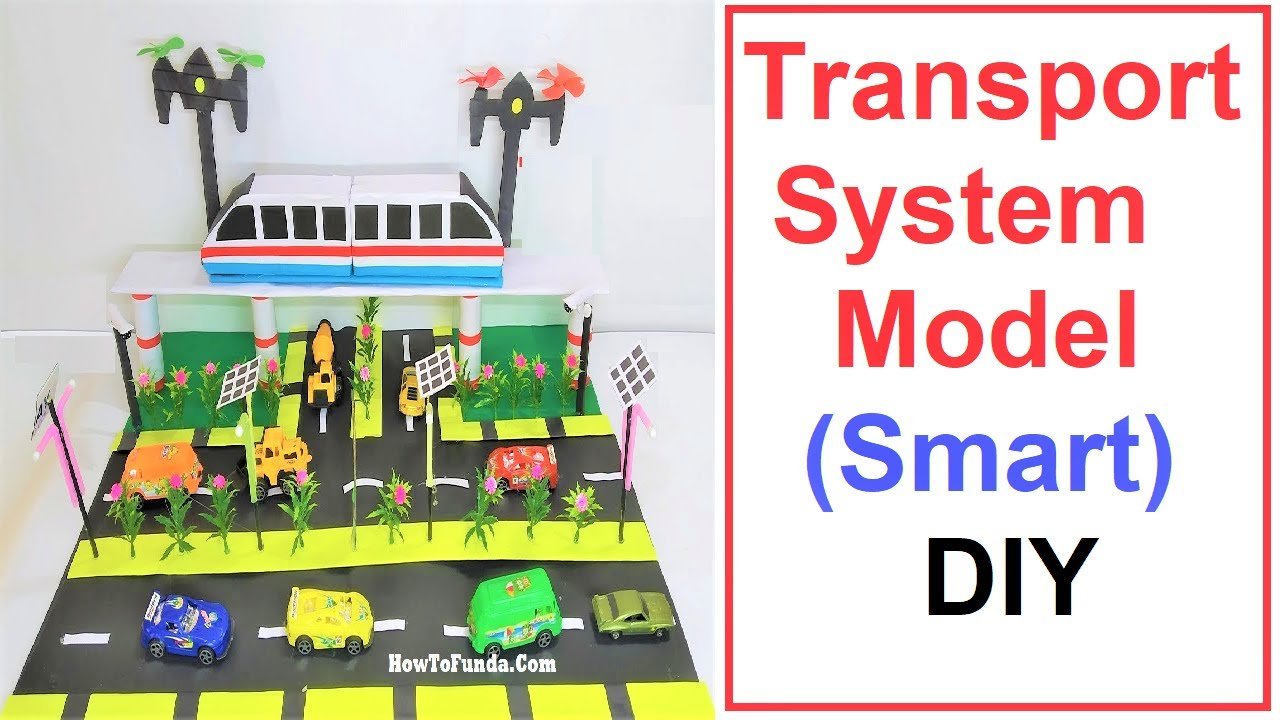a smart transportation system with solar panels, solar signals, drones, road infrastructure, metro trains, and modern vehicles offers sustainable, efficient, and accessible mobility solutions for urban and rural communities alike, paving the way towards a more connected and sustainable future.
Creating a smart transportation system model project using cardboard and colored paper can be an excellent way to showcase innovative urban infrastructure.

Here’s a step-by-step guide to making a visually appealing and informative model:
Materials Needed:
- Cardboard sheets
- Colored paper
- Scissors
- Glue or adhesive
- Ruler
- Markers or pens
- Small LED lights (for street lights)
- Small toy trains or printed images (for metro trains)
- Miniature drones or printed images (for drones)
- Small solar panels (for solar street lights)
- Toothpicks or small dowels (for support)
Step by Step Video Instructions:
1. Prepare the Base:
- Cut a large rectangular piece of cardboard to serve as the base for your model.
- Cover the base with colored paper or paint it to resemble a cityscape.
2. Create Buildings:
- Cut rectangular pieces of cardboard to serve as buildings of different heights.
- Cover the buildings with colored paper to add windows, doors, and other details.
- Arrange the buildings on the base to create a city skyline.
3. Add Metro Train System:
- Use small toy trains or printed images of metro trains to represent the metro system.
- Create tracks using colored paper or draw them directly on the base.
- Place the metro trains on the tracks to simulate their movement through the city.
4. Install Solar Street Lights:
- Attach small solar panels to the rooftops of buildings or street lamp posts.
- Connect LED lights to the solar panels to represent solar-powered street lights.
- Place the street lights along the streets of your model city.
5. Include Drones:
- Use miniature drones or printed images of drones to represent drone technology.
- Attach toothpicks or small dowels to the drones to simulate their flight.
- Place the drones strategically around the city to demonstrate their use in transportation and surveillance.
6. Add Wi-Fi Hotspots:
- Cut small circles of colored paper to represent Wi-Fi hotspots.
- Glue the circles to specific locations in the city to indicate the availability of Wi-Fi connectivity.
7. Detailing and Decoration:
- Use markers or pens to add additional details to the model, such as roads, parks, and landmarks.
- Decorate the base with trees, bushes, and other greenery to create a more realistic urban environment.
Demonstration and Explanation:
- Smart Transportation Features: Explain how the model incorporates various smart transportation technologies such as metro trains, solar street lights, drones, and Wi-Fi hotspots.
- Benefits: Discuss the benefits of smart transportation systems, including reduced energy consumption, improved safety, and enhanced connectivity.
- Real-World Applications: Provide examples of real-world smart transportation projects and their impact on urban development and sustainability.

